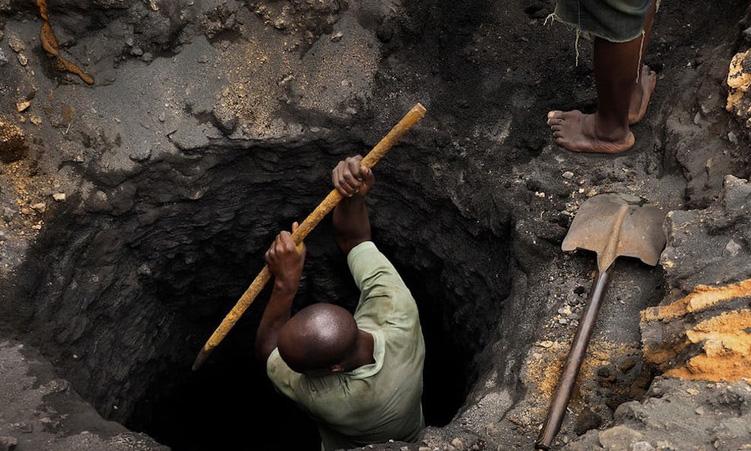NAMIBIA will be able to generate enough power to meet local demand by the year 2013, NamPower Managing Director Paulinus Shilamba told Members of Parliament yesterday.
Until then, though, the country needed an additional 200 megawatt (MW) of electricity that would be imported from countries other than South Africa, he said. Shilamba was briefing the Parliamentary Standing Committee on Economics about the local power supply situation amidst a regional power shortage caused by dwindling reserve capacity in South Africa.”We are working day and night to find solutions, especially after Cabinet tasked us in May this year to draw up a strategy on the electricity supply up to 2011,” Shilamba told the Committee chaired by Swapo MP Peya Mushelenga.”We submitted the strategy to Cabinet at the end of last month,” he added.”We plan to add 50 MW power generating capacity to the Paratus diesel power station at Walvis Bay over the next six to seven months, which will cost about N$600 million, and add another 100 MW nearby approximately 18 months from now,” Shilamba told the Committee.”Since the price of diesel has skyrocketed recently you can image that these extensions will be very costly to run.We will not break even, instead the generation cost will be around 110 cents (N$1.10) per kilowatt hour then and these costs must be borne by the consumers.”The two projects would probably be developed with partners from the local mining industry, according to Shilamba, with NamPower to hold a 40 per cent partnership.He said the N$3,2 billion Caprivi inter-connector line would be completed around September 2009, enabling electricity imports from Zambia.The installation of a fourth turbine at the existing Ruacana hydropower plant would add another 80 MW, relieving the power squeeze in a year’s time.Shilamba maintained that the long-awaited offshore Kudu gas project would materialise by 2012 with a 450 MW power plant near Oranjemund.The two partners, Eskom and Tullow Oil, would not budge from their demand to handle Kudu gas and electricity sales in US dollars, however, delaying the development of the project.In order to buffer the foreign exchange fluctuations, a financial hedging strategy must be developed, Shilamba said.”Some progress is [being] made, with some of our large mining clients in Namibia having signalled they could be invoiced in US dollars in future,” he said.NamPower was also looking at the construction of 12 small dams and hydropower stations on the Orange River to generate up to 108 MW of electricity.All these projects, including Kudu, would make Namibia self-sufficient within five years with regard to electricity supply, lessening the dependency on South African imports, Shilamba said.Touching on nuclear power, he said this was driven by Government but first a policy and legislation had to be drafted and close co-operation with international nuclear bodies was required.Asked by Swapo MP Clara Bohitile whether the newly created regional electricity distributors (REDs) could not be abolished and municipalities resume local power distribution, Shilamba responded that Government would soon hold a national stakeholder conference on this topic.Shilamba was briefing the Parliamentary Standing Committee on Economics about the local power supply situation amidst a regional power shortage caused by dwindling reserve capacity in South Africa.”We are working day and night to find solutions, especially after Cabinet tasked us in May this year to draw up a strategy on the electricity supply up to 2011,” Shilamba told the Committee chaired by Swapo MP Peya Mushelenga.”We submitted the strategy to Cabinet at the end of last month,” he added.”We plan to add 50 MW power generating capacity to the Paratus diesel power station at Walvis Bay over the next six to seven months, which will cost about N$600 million, and add another 100 MW nearby approximately 18 months from now,” Shilamba told the Committee.”Since the price of diesel has skyrocketed recently you can image that these extensions will be very costly to run.We will not break even, instead the generation cost will be around 110 cents (N$1.10) per kilowatt hour then and these costs must be borne by the consumers.”The two projects would probably be developed with partners from the local mining industry, according to Shilamba, with NamPower to hold a 40 per cent partnership.He said the N$3,2 billion Caprivi inter-connector line would be completed around September 2009, enabling electricity imports from Zambia.The installation of a fourth turbine at the existing Ruacana hydropower plant would add another 80 MW, relieving the power squeeze in a year’s time.Shilamba maintained that the long-awaited offshore Kudu gas project would materialise by 2012 with a 450 MW power plant near Oranjemund.The two partners, Eskom and Tullow Oil, would not budge from their demand to handle Kudu gas and electricity sales in US dollars, however, delaying the development of the project.In order to buffer the foreign exchange fluctuations, a financial hedging strategy must be developed, Shilamba said.”Some progress is [being] made, with some of our large mining clients in Namibia having signalled they could be invoiced in US dollars in future,” he said.NamPower was also looking at the construction of 12 small dams and hydropower stations on the Orange River to generate up to 108 MW of electricity.All these projects, including Kudu, would make Namibia self-sufficient within five years with regard to electricity supply, lessening the dependency on South African imports, Shilamba said.Touching on nuclear power, he said this was driven by Government but first a policy and legislation had to be drafted and close co-operation with international nuclear bodies was required.Asked by Swapo MP Clara Bohitile whether the newly created regional electricity distributors (REDs) could not be abolished and municipalities resume local power distribution, Shilamba responded that Government would soon hold a national stakeholder conference on this topic.
Stay informed with The Namibian – your source for credible journalism. Get in-depth reporting and opinions for
only N$85 a month. Invest in journalism, invest in democracy –
Subscribe Now!










